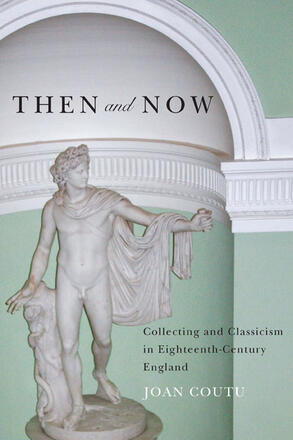
Then and Now
Collecting and Classicism in Eighteenth-Century England
Description
In the mid-eighteenth century, English gentlemen filled their houses with copies and casts of classical statuary while the following generation preferred authentic antique originals. By charting this changing preference within a broader study of material culture, Joan Coutu examines the evolving articulation of the English gentleman. Then and Now consists of four case studies of mid-century collections. Three were amassed by young aristocrats - the Marquis of Rockingham, the Duke of Richmond, and the Earl of Huntingdon - who, consistent with their social standing, were touted as natural political leaders. Their collections evoke the concept of gentlemanly virtue through example, offering archetypes to encourage men toward acts of public virtue. As the aristocrats matured in the politically fractious realm of the 1760s, such virtue could become politicized. A fourth study focuses on Thomas Hollis, who used his collection to proselytize his own unique political ideology. Framed by studies of collecting practices earlier and later in the century, Coutu also explores the fluid temporal relationship with the classical past as the century progressed, firmly situating the discussion within the contemporaneous emerging field of aesthetics. Broadening the focus beyond published texts to include aesthetic conversations among the artists and the aristocracy in Italy and England, Then and Now shows how an aesthetic canon emerged - embodied in the Apollo Belvedere, the Venus de’ Medici, and the like - which shaped the Grand Manner of art.
Reviews
“Coutu deftly handles the intersection of English classicism, collecting and political culture in compelling case studies that are filled with significant new finds and insights.” Douglas Fordham, University of Virginia
“This highly theoretical and erudite book offers a thorough analysis of a narrow selection of individuals within a limited time-frame, setting them in the wider context of the collecting tastes and patterns of the eighteenth century as a whole.” Journal o
“Then and Now often strikes the reader as a study that exemplifies the virtues of beauty and grace it explores in the mid-eighteenth-century collections it features. Tightly structured, it moves smoothly from the micro to the macro level, integrating its